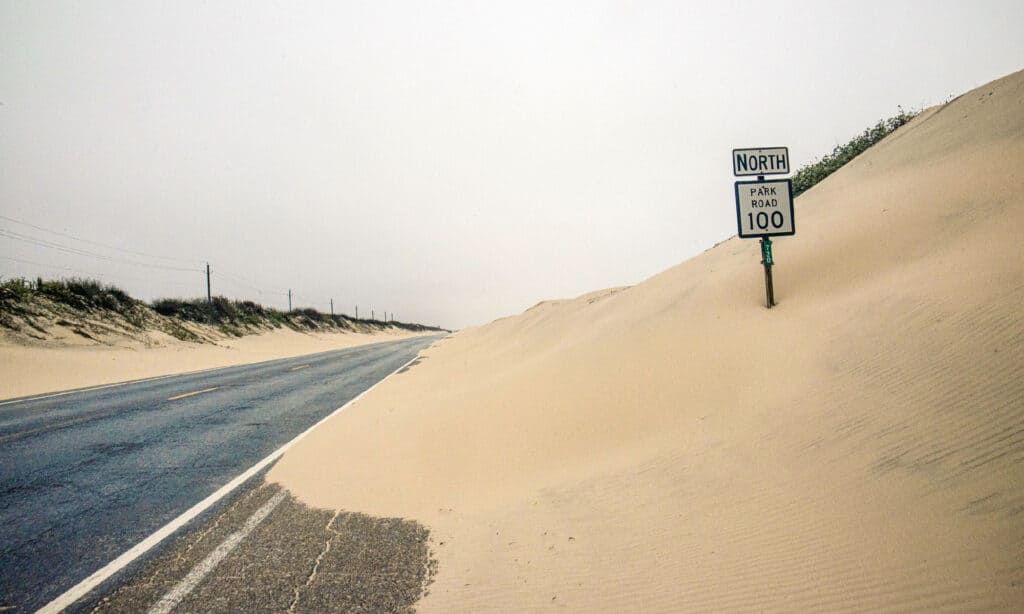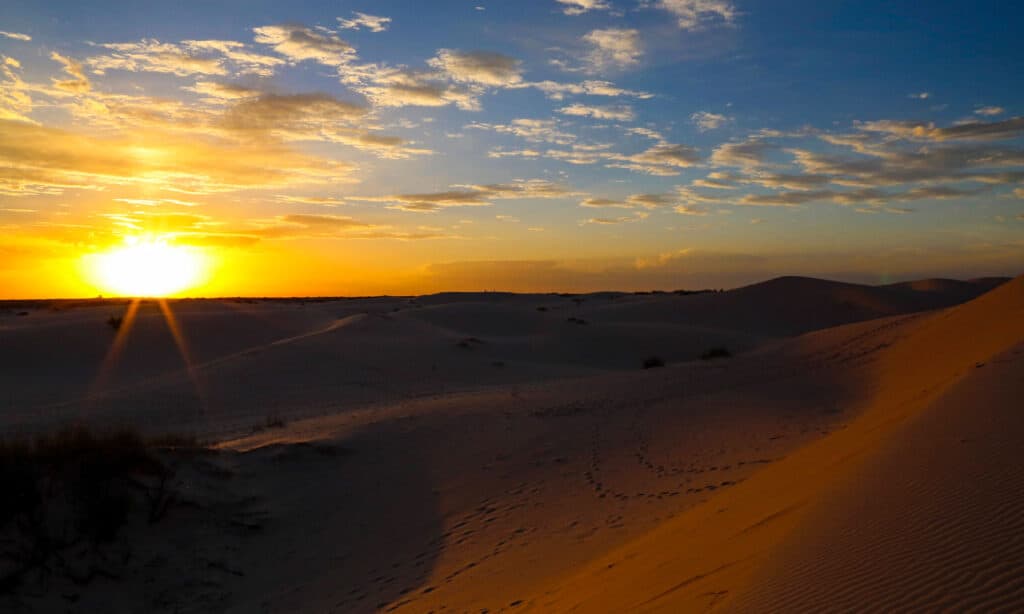Texas is a state of many things. For one, it is the second-largest state in the United States by area and population. It’s also impossible to have a barbecue without thinking of Texas, cowboy costumes, a different and exciting culture to explore, and a distinctive accent you can recognize from anywhere. If Texas were food, it would have a mixture of interesting flavors. But aside from its culture and cuisine, Texas is also known for its unique topography. While the state seems arid, it is adorned with beautiful structures such as caves and nature-formed gifts like lakes and springs. But are there sand dunes in Texas?
Texas has its share of towns, mountains, farms, and beaches, but did you know it also includes the most amazing state park with enormous sand dunes? The most enchanted undiscovered location in the Lone Star State is the Monahans Sandhills State Park. You might have heard about the Great Sand Dunes in Colorado or the Imperial Sand Dunes in California, but Texas’ Monahans Sandhills is a view to delight in. Below, we will explore interesting facts about these vast sand dunes in Texas.
Does Texas Have Sand Dunes?

Texas, like Oklahoma and Colorado, has sand dunes.
©iStock.com/ruthannburke
Like its neighboring states, Oklahoma and Colorado, Texas has sand dunes. This vast sand dunes park is called the Monahans Sandhills State Park and encompasses 3,840 acres of massive dunes open to public exploration. The 1,550-hectare state park lies on the southern Llano Estacado in Ward County and Winkler County, Texas. Monahans, Texas, is its closest large city, while Exit 86 on Interstate 20 is the closest limited-access highway entrance. Native Americans used the dunes as a source of freshwater when they arrived in the region 12,000 years ago.
Sand dunes up to 70 feet high can be found in Monahans Sandhills State Park. The sandhills are not a desert, despite looking like one. Instead, they are a component of a semi-arid ecosystem that includes both groundwater and relatively nutrient-poor windblown sand. On average, only 12.3 inches of rain fall to this location each year.
The park is almost entirely unmarked. Therefore, no paths or directions exist, leaving the area open for exploration. As a result, the land is lovely, spotless, and appears to have never been touched by humans. When there are severe gusts, new markings are also removed. The enormous sandhills are the ideal backdrop for stunning photographs and artistic creations.
What Can You Do in the Monahans Sandhills State Park?

You can experience sand surfing and horse riding at the Monahans Sandhills Park.
©iStock.com/brucemaloneatx
At the Monahans Sandhills Park, a full day of adventure can be filled with various wild pursuits, such as horseback riding, photography, sand surfing, and more. This amazing park will give you the impression that you are on a long trek through the Sahara Desert. Bring lunch and spend the day riding a horse or exploring on foot. You can also use sand disks to surf the dunes. At the Dunagan Visitors Center, you may learn more about the park’s natural history and cultural heritage, or you can camp out and take in the park’s spectacular sunsets. Here are some fun things you can do inside sandhills park:
Sand Surfing
“Sand surfing” is a local sport that tourists like participating in. Guests bring boogie boards, kayaks, and sleds for a spectacular day of surfing down the edges of the tallest dunes. You must try it out because it’s the coolest and most distinctive sport.
Horse Riding
To explore the 800-acre equestrian area, which has no designated routes, you are permitted to bring your horse to the dunes. For the prettiest day out, even if you regrettably don’t own a horse, you can still bring your four-legged buddies. However, be prepared for deep sand, scrub, and a few mesquite trees. Three campsites, a trailer parking area, and potable water provide additional equestrian facilities.
Set up Camp
If you are coming from a distance, you might consider booking one of the 26 campsites with water and electricity in the park to spend the night beneath the stars.
Explore the Dunes
You can explore the park at your leisure because there are no designated pathways. Keep an eye out for the numerous plants, wildflowers, and animals such as kangaroo rats, woodrats, badgers, feral hogs and more, that survive in an area that appears to be unfriendly. It is best to practice cautious trekking because the dunes heat up quickly in the summer. Also, keep an eye on your surroundings to easily return to where you started.
How Were the Monahans Sandhills Formed?

The Monahans Sandhills are made up of fragments of old mountains.
©iStock.com/DenisTangneyJr
The Monahans Sandhills are composed of fragments of old mountains that were eroded and thrown here by powerful winds 5,000 to 7,000 years ago. Some claim that the Pecos River eroded fragments from the Rocky Mountains in New Mexico, which were later carried into the region by the wind. These sand dunes eventually became a haven for flora and fauna. Long ago, humans relied on plants, animals, and natural water seeps to find the wealth and safety of these dunes. Many people still go to the Monahans Sandhills for safety so they can camp, explore, play in the sand, and enjoy nature.
The High Plains’ western and southern edges are covered in dunes. From southeast New Mexico and southeast through Monahans and almost to Crane, they are found in a belt. The Caprock Escarpment rises about 300 feet above the plains of the Pecos Valley to the east of this belt. During the cold and dry ice ages, robust wind gusts from the west and northwest brought sand that was trapped by this elevation rise.
What are the Biggest Sand Dunes in the United States?
The Great Sand Dunes are the tallest in North America, with a few dunes rising more than 700 feet, and are located in southern Colorado. Great Sand Dunes resemble a backward beach in the spring and summer when snowmelt from the two mountain ranges surrounding the park forms the wide and shallow Medano Creek.
Up Next…
The photo featured at the top of this post is © iStock.com/DenisTangneyJr
Thank you for reading! Have some feedback for us? Contact the AZ Animals editorial team.






